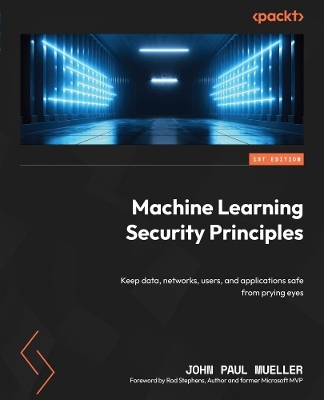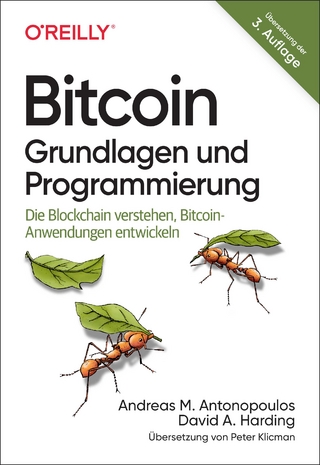
Machine Learning Security Principles
Packt Publishing Limited (Verlag)
978-1-80461-885-1 (ISBN)
Key Features
Discover how hackers rely on misdirection and deep fakes to fool even the best security systems
Retain the usefulness of your data by detecting unwanted and invalid modifications
Develop application code to meet the security requirements related to machine learning
Book DescriptionBusinesses are leveraging the power of AI to make undertakings that used to be complicated and pricy much easier, faster, and cheaper. The first part of this book will explore these processes in more depth, which will help you in understanding the role security plays in machine learning.
As you progress to the second part, you’ll learn more about the environments where ML is commonly used and dive into the security threats that plague them using code, graphics, and real-world references.
The next part of the book will guide you through the process of detecting hacker behaviors in the modern computing environment, where fraud takes many forms in ML, from gaining sales through fake reviews to destroying an adversary’s reputation. Once you’ve understood hacker goals and detection techniques, you’ll learn about the ramifications of deep fakes, followed by mitigation strategies.
This book also takes you through best practices for embracing ethical data sourcing, which reduces the security risk associated with data. You’ll see how the simple act of removing personally identifiable information (PII) from a dataset lowers the risk of social engineering attacks.
By the end of this machine learning book, you'll have an increased awareness of the various attacks and the techniques to secure your ML systems effectively.What you will learn
Explore methods to detect and prevent illegal access to your system
Implement detection techniques when access does occur
Employ machine learning techniques to determine motivations
Mitigate hacker access once security is breached
Perform statistical measurement and behavior analysis
Repair damage to your data and applications
Use ethical data collection methods to reduce security risks
Who this book is forWhether you’re a data scientist, researcher, or manager working with machine learning techniques in any aspect, this security book is a must-have. While most resources available on this topic are written in a language more suitable for experts, this guide presents security in an easy-to-understand way, employing a host of diagrams to explain concepts to visual learners. While familiarity with machine learning concepts is assumed, knowledge of Python and programming in general will be useful.
John Paul Mueller is a seasoned author and technical editor. He has writing in his blood, having produced 121 books and more than 600 articles to date. The topics range from networking to artificial intelligence and from database management to heads-down programming. Some of his current books include discussions of data science, machine learning, and algorithms. He also writes about computer languages such as C++, C#, and Python. His technical editing skills have helped more than 70 authors refine the content of their manuscripts. John has provided technical editing services to a variety of magazines, performed various kinds of consulting, and he writes certification exams. Rod Stephens has been a software developer, consultant, instructor, and author. He has written more than 30 books and 250 magazine articles covering such topics as three-dimensional graphics, algorithms, database design, software engineering, interview puzzles, C#, and Visual Basic. Rod's popular C# Helper and VB Helper websites receive millions of hits per year and contain thousands of tips, tricks, and example programs for C# and Visual Basic developers.
Table of Contents
Defining Machine Learning Security
Mitigating Risk at Training by Validating and Maintaining Datasets
Mitigating Inference Risk by Avoiding Adversarial Machine Learning Attacks
Considering the Threat Environment
Keeping Your Network Clean
Detecting and Analyzing Anomalies
Dealing with Malware
Locating Potential Fraud
Defending against Hackers
Considering the Ramifications of Deepfakes
Leveraging Machine Learning against Hacking
Embracing and Incorporating Ethical Behavior
| Erscheinungsdatum | 29.12.2022 |
|---|---|
| Vorwort | Rod Stephens |
| Verlagsort | Birmingham |
| Sprache | englisch |
| Maße | 191 x 235 mm |
| Themenwelt | Informatik ► Netzwerke ► Sicherheit / Firewall |
| Informatik ► Theorie / Studium ► Künstliche Intelligenz / Robotik | |
| ISBN-10 | 1-80461-885-3 / 1804618853 |
| ISBN-13 | 978-1-80461-885-1 / 9781804618851 |
| Zustand | Neuware |
| Informationen gemäß Produktsicherheitsverordnung (GPSR) | |
| Haben Sie eine Frage zum Produkt? |
aus dem Bereich


